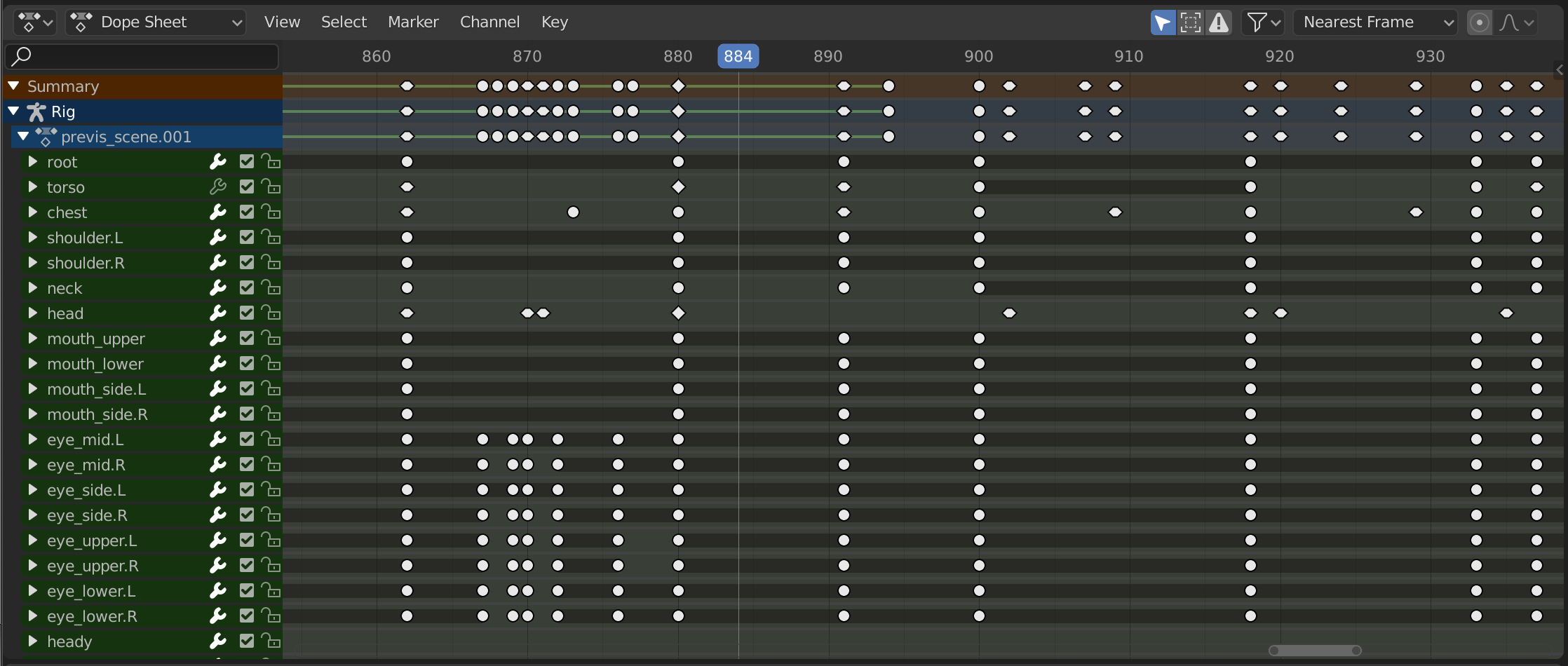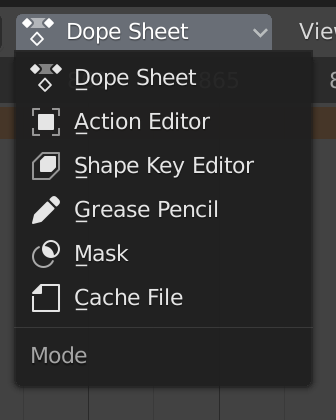Introducción#
The Dope Sheet offers a bird’s-eye view of the keyframes inside the scene. It’s inspired by classical hand-drawn animation, where animators make use of a chart showing exactly when each drawing, sound, and camera move will occur, and for how long.

La Planilla de tiempos.#
Modos de la Planilla de tiempos#
The editor has several different modes that can be selected from a dropdown in the header. The default Dope Sheet mode gives an overview of most types of animatable data. For others, such as masks, you need to switch to a more specific mode.

Modos de la Planilla de tiempos.#
Los modos son los siguientes:
Planilla de tiempos
Archivo de caché: modo originalmente destinado a mostrar los datos de animación capturados en archivos Alembic, aunque nuca fue realmente implementado.
Región principal#
The Dope Sheet Editor shows a stack of channels (animatable properties), and for each channel, a series of keyframes laid out along the time axis.

El editor Planilla de tiempos mostrando canales de objetos.#
Los fotogramas clave podrán ser de distintos colores y formas:
Gris |
No seleccionado |
Amarillo |
Seleccionado |
Otros colores |
Etiqueta de clave personalizada definida por el usuario () |
Rombo |
Asa de tipo Libre |
Circular (o Redondez o Redondear) |
Asa de tipo Automática limitada |
Círculo |
Asa de tipo Automática |
Cuadrado |
Asa de tipo Vector |
Rombo |
Asa de tipo Alineada |
Barra gris entre claves |
Clave mantenido (dos claves con valores idénticos) |
Linea verde entre claves |
El segmento de curva usa una interpolación personalizada () |
Flecha hacia arriba |
Máximo local de la curva (visible cuando esté activa) |
Flecha hacia abajo |
Mínimo local de la curva |
Los claves podrán ser seleccionados haciendo clic y ser movidos al arrastrar. Ver los menús Seleccionar y Clave para más opciones.